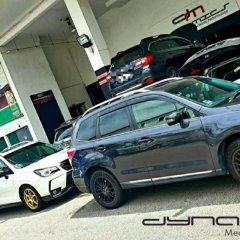Search the Community
Showing results for tags 'ignition coil'.
-
http://www.youtube.com/watch?v=W94iksaQwUo Ignition System Parts Automotive ignition systems are made up of several key components. The trigger device is the ignition module or points, and these supply energy to the coil. The ignition coil multiplies the energy supplied by the module and supplies that energy to the distributor cap and rotor. The spark plugs receive this energy from the cap and rotor through the ignition cables or plug wires and provide a spark to ignite the fuel. Each of these is important to the operation of the ignition system, but to really understand how the system works, some basic theory is needed. Theory Over the years, the way in which the coil is triggered has changed, but the theory is the same. The theory of Magnetic Inductance says that when a current is passed through a conductor, a magnetic field builds around that conductor. When the current is stopped, the field collapses and a voltage is induced into the conductor by the collapsing magnetic field. If another conductor is placed in close proximity to the conductor, and the current is turned off, the voltage will be induced into that conductor as well. We also know that if we form the conductor into a coil, we can strengthen the magnetic field. The stronger the field, the stronger the induced voltage. This is how an ignition coil works. By turning current off and on to one coil, we induce voltage into a second coil. How it Works Start with a coil of wire. Passing a current through a coil of wire causes a very strong magnetic field to develop around that coil of wire. This is called the primary side of the coil and is a coil of a few turns of thick wire. Inside this coil, place a second coil made up of many turns of fine wire. This is called the ignition coil secondary. One end of the primary coil winding is attached to ground, while 12 volts is supplied to the other end of the coil winding. A strong magnetic field is developed. Then, the ignition module, or points set, turns off the current, and the magnetic field collapses around the secondary winding inducing voltage into that winding. That voltage is then carried to the coil tower on the distributor cap. Inside the cap, a spinning rotor picks up the voltage and routes it to the appropriate plug wire. The voltage travels down the plug wire to the spark plug, where it jumps across the gap and ignites the fuel. This is the function of a distributor type ignition system. Later model cars use a distributorless system, and each cylinder has its own coil. The function is the same, except that each coil is triggered by a transistor in the on board computer that turns off current to that coil's primary winding. Check us and like us at : - www.facebook.com/dynamicsmechanic
